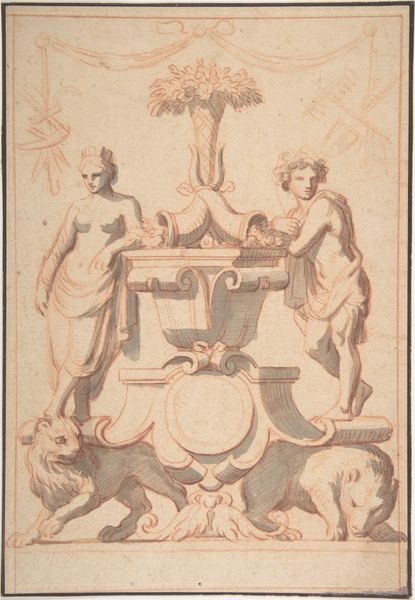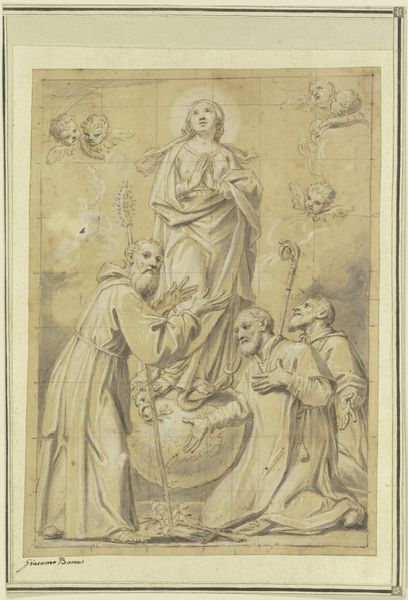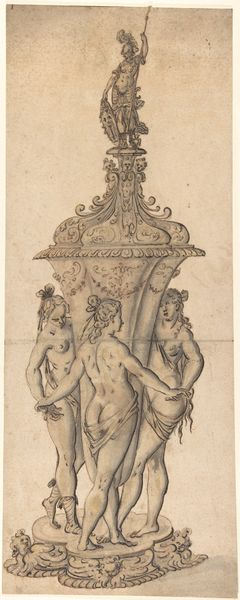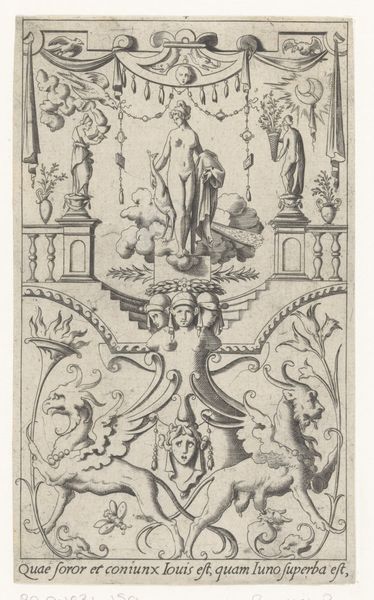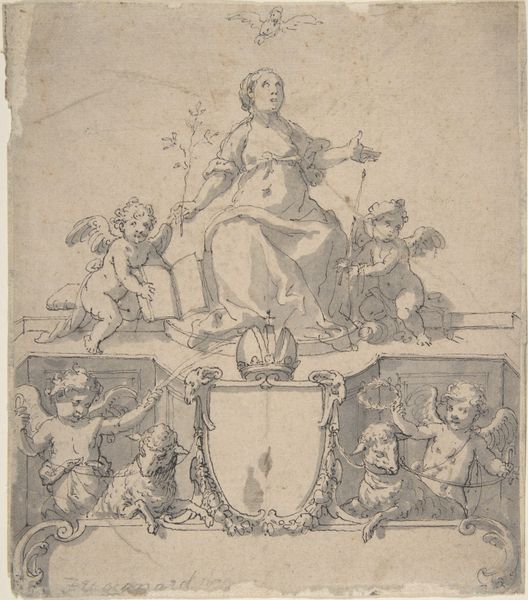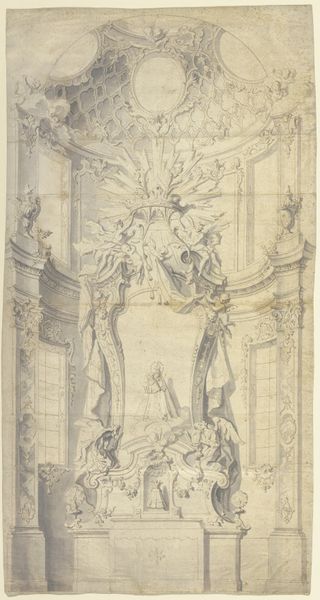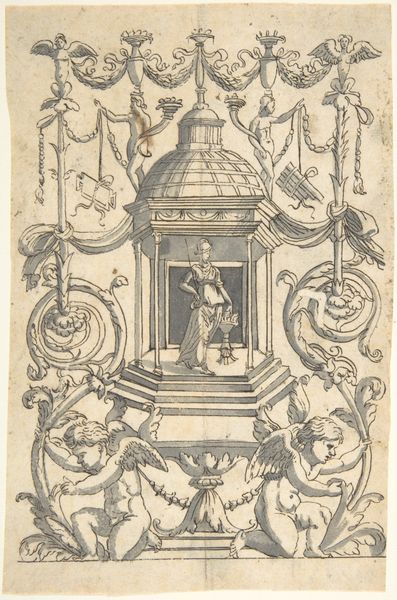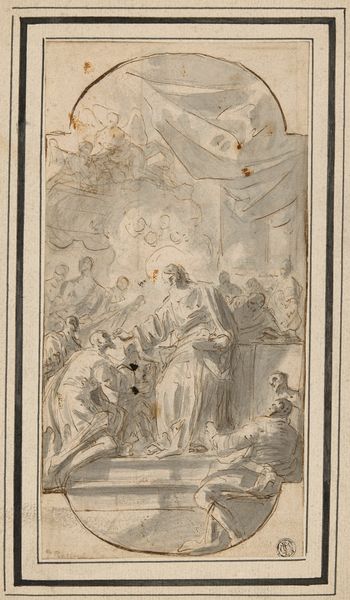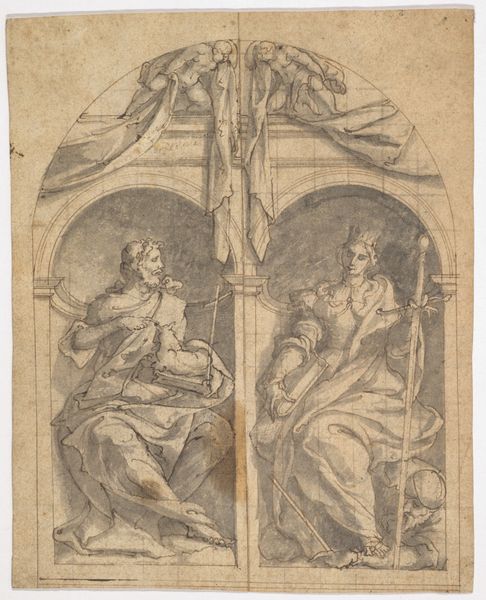
drawing, paper, ink, pen
#
drawing
#
baroque
#
figuration
#
paper
#
ink
#
pen
Dimensions: 234 × 171 mm (primary support); 260 × 190 mm (secondary support)
Copyright: Public Domain
Curator: I find myself immediately drawn to the sense of gravity and classical form in this piece. Editor: This is a drawing entitled "Antique Carved Marble Candelabra Base," created around the 1640s by Andrea di Lione. It's currently held at The Art Institute of Chicago. He used pen and ink on paper to bring it to life. Curator: The figures certainly lend that classical air; they seem like vestal virgins. What symbolic meanings were associated with candleholders during this era? It reminds me of Caravaggio and Artemisia Gentileschi and those kinds of candlelit interior scenes from the time. Editor: Often, the candelabra held associations with both the sacred and the secular, illumination representing knowledge and divine presence in religious settings but also providing a key element to Baroque aristocratic interiors. Lione seems quite aware of how that meaning would manifest in artwork such as this, as the piece evokes both classical paganism and burgeoning religiosity. Notice the bucrania, the oxen skulls which nod back to antiquity while supporting these idealized feminine forms and complex base decorations that also hint to death and sacrifice. Curator: You are spot on about that classical sensibility, the base evokes that aesthetic from the Hellenistic period when bucrania were extremely popular symbols across different mediums. The very fact that the design emphasizes marble aligns it with that concept as well. Di Lione seems very invested in placing it within that history. It seems like more than mere aesthetics—more a purposeful reaching across time. The purpose of the artwork within culture really takes precedence. Editor: Absolutely. The Baroque era constantly negotiated between embracing classicism and forging its own, emotionally charged identity, which seems to bleed out with Di Lione’s use of earthy and delicate tones as if in conflict with the hard lines of the subject material. These symbolic nods, these historical touchstones. They ground us, but they also hint at deeper, more resonant meanings. Curator: The play with symbolic weight creates tension and reveals a story, even within a seemingly simple depiction of an object. Editor: Indeed, the artist pulls meaning from so many wells of the collective memory of Europe in that era, which makes for some really fascinating implications about taste, interior decor, and the use of symbolism in aristocratic culture during that time.
Comments
No comments
Be the first to comment and join the conversation on the ultimate creative platform.
